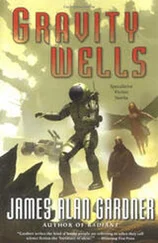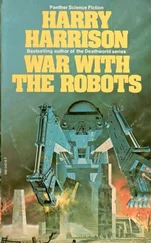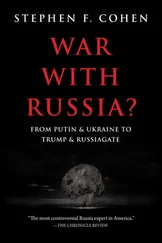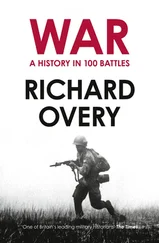General Sir David McKinlay, sitting in the VTC room in the CCOMC from where he had taken part in the NAC, leaned back in his chair and watched on the screen as Kostilek stood up and left the chamber, followed by SACEUR, Admiral Max Howard. At last , he thought, common sense has prevailed .
Major General Skip Williams, the hawk-faced American Deputy Chief of Staff Operations at SHAPE, looked at McKinlay.
“Too bad they couldn’t have reached that conclusion a week ago, Sir.”
“Aye, Skip. And the tragedy is that it took our two ships to be sunk and a lot of American, German and British lives lost before they could get their act together,” replied McKinlay, relapsing into his broadest Falkirk accent. As a proud member of the Naval Service, he felt deeply for the sailors who had been lost in the air attack on Riga.
He stood up, wincing as his weight bore down on the stump of his amputated leg. When he was tired, as he was now, the dull ache of the phantom pains always seemed worse. This was no time for feeling sorry for himself, though. “It’s too late to help the Baltics… and God alone knows how we’ll ever push the Russians out. But at least the Russians haven’t prevailed over the wobblers in NATO—as no doubt they’ve been trying to do behind our backs. They overplayed their hand. That simple. If they’d contented themselves with only attacking local forces, the usual suspects would have had the perfect excuse to stay out. But even the Germans are angry and that really is saying something. I can imagine the President kicking a few butts in Moscow,” he said, with a grim smile.
Group Captain Jamie Swinton appeared at his elbow. “The Force Generation team are in your office now, Sir. And Lorna’s fixed you a brew.”
Shortly afterward, McKinlay, mug of tea in hand, looked around his conference table at the team. Headed up by Colonel Fritz Hansen, a former panzer battalion commander of the Bundeswehr, the multinational team of Norwegians, Americans, Italians and British was responsible for the detailed engagement with the member nations to deliver the forces required for NATO operations.
I couldn’t ask for a better bunch , McKinlay thought to himself. But NATO could only be as good as the nations wanted it to be and too often the political rhetoric did not match the military reality.
“It’s looking really bad, Sir,” said Hansen, getting straight to the point. “We’re struggling with the Very High Readiness Joint Task Force. The lead battalion group is some way from being ready to deploy. Hardly surprising since it’s a composite battalion of three different nations and they have never trained together properly. As well as that, the British tell me that most of the reserves they depend on are some way off being ready.”
He looked at McKinlay and shrugged his shoulders in regret. McKinlay knew how much he would hate having to say such a thing. Criticizing another nation in public was a no-go area in multinational, hypersensitive NATO. But right now he was having to censure his own boss’s nation, even if McKinlay was a NATO, rather than a British commander. But Hansen was a good man and said it regardless and McKinlay respected him for it.
Hansen was right: what sort of cake-and-arse party was this? NATO’s much-vaunted VJTF, established with a great fanfare at the NATO Summit in Wales in September 2014, was proving to be a political fudge rather than a credible military force. It now looked as if it was going to fail at the first hurdle because, while nations had delegated command and control to SACEUR immediately Article 5 was declared, the time it would take to deploy the force meant it would not be ready for at least another twenty-eight days. Not only that, Britain was so dependent on reservists after the catastrophic Defense Review of 2010 that the sinews of the force, particularly command elements and logistics units, were incapable of rapid deployment.
“I can’t say I’m surprised, Fritz,” he said, letting him know that he was not offended by his comment. “I know from my own experience that it takes weeks, if not months, to get a reservist called up and processed, let alone trained to a suitable level to fight alongside a regular, and that is time we just do not have. And don’t get me going on our inability to recruit even half enough reservists in the first place. Anyway, why don’t you run through the gaps and where we are with the NATO Response Force preparations? We reduced its readiness to move four days ago. It should be pretty much ready to deploy… So, how quickly can we deploy those forty thousand troops ‘anywhere in the world,’ as the Alliance has told the world it can do?” McKinlay’s voice was now heavy with irony. Everyone in the room knew full well that these 40,000 troops were pure fantasy.
Hansen gave a small smile. “First, the good news. The maritime component of the NRF, NATO Response Force—that’s five frigates and destroyers, one each from Portugal, Canada, Norway and two from France—is currently on an exercise in the eastern Mediterranean. It’ll take them eight days to steam to the Baltic. They’ve put some valuable training time under their belts and they’re good to go. Tom has also heard some more good news.” Here he looked at the Royal Navy Commander, who was part of his team of force generators.
“That’s right, Sir,” continued Tom Black, recently captain of a Royal Navy Type 23 frigate and now a key player in Hansen’s team. “The UK is deploying an amphibious task group to the Baltic led by our new carrier, Queen Elizabeth . It’s expected to deploy on Wednesday. That means it could link up with the NRF maritime component in due course. If the UK is prepared to wait for it to catch up, that is.”
“Why would they wait?” asked the Turkish Air Force lieutenant colonel, who had recently joined his team from an operational tour on the Syrian border. He spoke excellent English, unlike his Greek army counterpart, who had so far refused to even accept his arrival. The two men from the traditionally belligerent countries were continuing, in customary NATO style, to score points off each other at every opportunity.
“Good question, Erol. Explain please, Tom.”
“Simple. Command and control. For starters, the NRF is commanded by a French admiral, who happens to be senior to the British admiral on Queen Elizabeth . That means there will be questions to sort out about who will command the Task Group when it joins up. Call that one wrong and you can imagine how that will play with the Brits… or the French for that matter.” Black shrugged his shoulders.
The others in the room nodded back in understanding. Anyone who had spent any time at NATO knew that, with certain nations at least, the needs of the “flags to post” plot—which nation had which generals in which job—frequently meant messy compromises that made little operational sense.
“The bigger problem, though, is that we need a command-and-control structure in the Baltic as NATO maritime forces arrive and come online up there, and STRIKFORNATO—Naval Striking and Support Forces NATO—is the obvious HQ to send. Queen Elizabeth may not have its designated fighters on deck, maritime-patrol aircraft, or enough naval escorts running dedicated, integrated defense, but that does not mean there are no NATO assets right on hand in the Baltic. Because there are. Plenty of them. Aircraft out of Germany, Poland and Denmark—to say nothing of our partners, Sweden and Finland. The same for anti-sub maritime-patrol aircraft and naval escorts. The Baltic is a positive hive of NATO activity at this very moment. But unless Queen Elizabeth , or a NATO HQ, is getting and controlling all that information they are sending back, and in real time, it is uncoordinated and may count for little.”
Читать дальше












